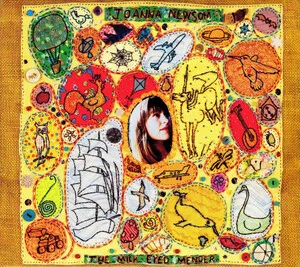
New Weird America (NWA) is a loosely defined early‑2000s U.S. movement that revived and mutated psychedelic and folk traditions through a DIY, experimental lens. It blends psych folk, free folk, drone, and outsider Americana with lo‑fi recording aesthetics, extended improvisation, and a surreal, pastoral sensibility.
Rather than a strict genre, NWA describes a network of artists, collectives, and small labels who favored open tunings and acoustic timbres alongside noise, field recordings, tape hiss, and communal performance practices. The results range from intimate, childlike songs to sprawling trance‑drone ritual, all united by a fascination with the “old, weird” folk imaginary filtered through contemporary indie and experimental cultures.
The term “New Weird America” was popularized in 2003 by journalist David Keenan in The Wire as a nod to Greil Marcus’s phrase “the old, weird America.” It identified a constellation of U.S. artists reconnecting with folk lineages (Appalachian, American Primitive guitar, 1960s psych folk) while embracing experimental, free‑improv, and noise practices. Early hubs included rural New England (Brattleboro, VT), Massachusetts, Providence’s post–Fort Thunder milieu, New York’s downtown avant scene, and California’s Bay Area.
NWA artists mixed acoustic instruments (guitar, banjo, dulcimer, harmonium) with drones, found sound, and tape‑warped textures. The scene thrived on CD‑R culture and boutique labels—Time‑Lag Records, Ecstatic Peace!, Holy Mountain, Paw Tracks, Drag City, and Young God—plus communal collectives like No‑Neck Blues Band and Sunburned Hand of the Man. The Brattleboro Free Folk Festival and numerous DIY tours helped circulate the sound.
High‑profile albums such as Animal Collective’s “Sung Tongs” (2004), Devendra Banhart’s “Rejoicing in the Hands” (2004), Joanna Newsom’s “The Milk‑Eyed Mender” (2004), Six Organs of Admittance’s “School of the Flower” (2005), Espers’ self‑titled (2004), Akron/Family’s debut (2005), and Jack Rose’s “Kensington Blues” (2005) drew broader attention. These records showcased the movement’s span—from intimate harp balladry to trance‑drone guitar ragas and communal psych‑folk jams.
By the late 2000s, NWA’s methods—lo‑fi intimacy, modal drone, communal improvisation, and mystical/folkloric imagery—bled into indie folk, dream‑leaning psych, and global “wyrd” folk scenes (e.g., New Weird Finland). While the banner receded, its imprint persists in contemporary indie, lo‑fi, and experimental folk practices.







